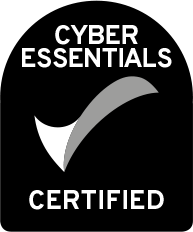Uber Drivers are workers and not self-employed, Supreme Court rules
19 February 2021. The UK Supreme Court has issued its judgment in the highly anticipated case of Uber BV v Aslam, in which the key issue was the employment status of Uber drivers. The ruling reinforced the findings of earlier legal challenges (most recently the Court of Appeal in 2018), which found that Uber drivers are workers and not self-employed.
What is the case about?
The case deals with the rights of private hire drivers whose services are offered through Uber. Uber connects drivers with paying passengers through the Uber app. Two former Uber drivers claimed that they were workers rather than self-employed and entitled to rights such as receiving the national minimum wage, paid holiday entitlement and, for some of them, protection from detriment for whistleblowing.
What is a ‘worker’ in law?
Whilst the definition of a worker in employment law is complex, it is most easily explained as a mid-point status between someone who is self-employed and someone who is an employee. As workers, people are entitled to certain basic statutory rights, principally those listed above. The value of those rights will vary between individuals. In this case the value depends partly on the length of time for which the drivers worked for Uber and could amount to many thousands of pounds in some cases – a cost that Uber will have to bear.
Uber’s defence throughout has been that their arrangement with drivers is typical of the private hire or gig economy. This ruling from the UK Supreme Court is the culmination of a series of cases involving similar issues in recent years. It will have far reaching implications for businesses beyond just the private hire driver sector. Businesses which engage individuals who are treated as self-employed consultants or independent contractors need to think carefully about the status of these individuals under employment legislation in the light of this decision.
The key point in this case
A key factor in this case concerned working time. Specifically, are drivers ‘working’ whilst the Uber app is on and they are waiting for a passenger or only when there is a passenger in the vehicle? The Supreme Court has stated that the drivers are working from the moment they turn on the app and are available to work in the area until the app is switched off. Under Uber’s arrangements the drivers received no form of pay during waiting time between fares. They are now entitled to claim pay at the national minimum wage rate for this time. Uber responded that the ruling centred on a small number of drivers and it had made changes to its business arrangements for drivers generally since the claims were launched by the group of drivers about 5 years ago.
What do hirers need to be aware of?
Any hirer of staff should make the staff member’s status clear from day one. This is done principally through a contract with each staff member. In this case the court emphasised that although contracts are important in terms of providing a context and framework for a relationship between a worker and a hirer, any determination of the worker’s status will depend on all the circumstances. Key questions will be how the work is performed in practice and whether the practice is consistent with what the contract says about the worker’s status. These are questions that have the potential to arise not just in the gig economy but in many worker/hirer relationships.




